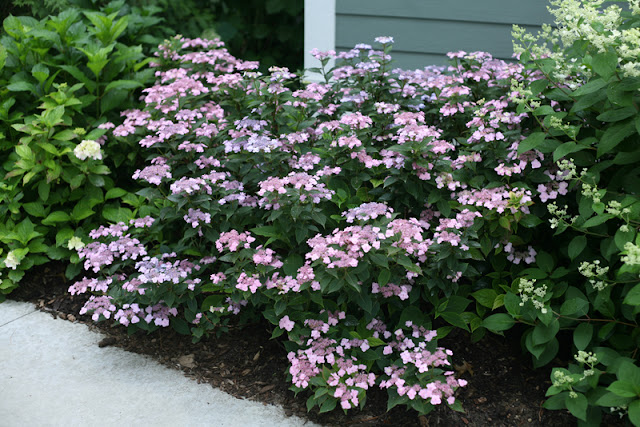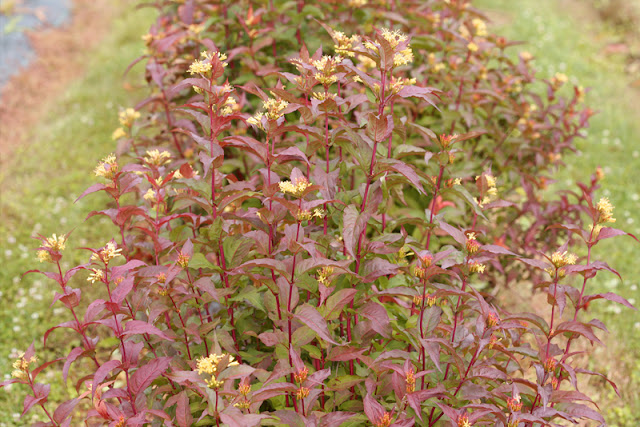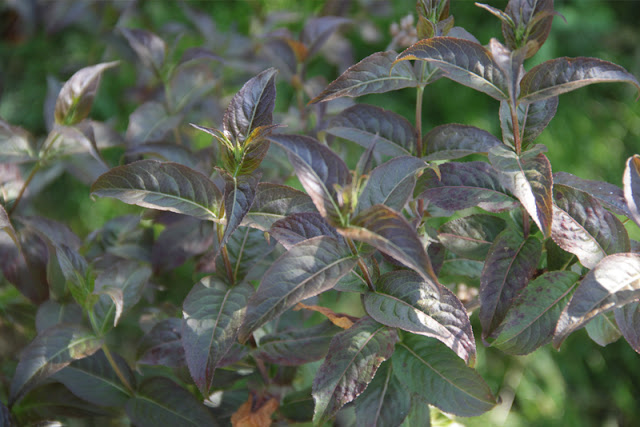 |
| Tuff Stuff™ reblooming mountain hydrangea |
The case for mountain hydrangeas
Hydrangea serrata is wonderful. Similar to H. macrophylla, but with better bud hardiness, it's a better choice for folks in colder USDA Zone 5 areas. Even those of you in milder climates will appreciate these plants because they are just so pretty and such good growers.The reblooming Tuff Stuff™ varieties are especially nice because they will bloom on new growth later in the summer so if the early summer bloom is compromised you will still enjoy flowers later in the season.
 |
| Tuff Stuff™ Red reblooming mountain hydrangea |
Like H. macrophylla, the blooms of H. serrata will change color depending on the soil. (Here's a good guide to turning hydrangeas blue.) Tiny Tuff Stuff™ has delicate, refined lacecap flowers that are an elegant addition to gardens. For more intense color, check out the original Tuff Stuff™. And if you need some really intense color, check out Tuff Stuff™ Red, whose doubled lacecap flowers open green and red before maturing to deep pink-red.
All of the Tuff Stuff™ hydrangeas are hardy to USDA Zone 5 and will grow in full sun or partial shade. Tiny Tuff stuff™ is the smallest, at 1.5-2', and the other two are in the 2-3' range.
All of the Tuff Stuff™ hydrangeas are hardy to USDA Zone 5 and will grow in full sun or partial shade. Tiny Tuff stuff™ is the smallest, at 1.5-2', and the other two are in the 2-3' range.
 |
| Tiny Tuff Stuff™ reblooming mountain hydrangea |
Anecdotally I can tell you that my H. serrata plants have always performed better than the H. macrophylla in my yard, and that the Tuff Stuff™ varieties are especially nice. Actually, these plants are staff favorites, being good growers both in our greenhouses and in our growers' yards.
I know that when I go to a store I always like seeing the staff picks. So here are some other staff favorites:
I know that when I go to a store I always like seeing the staff picks. So here are some other staff favorites:
P.S. This is the list I get when I don't let anyone choose a hydrangea as a favorite. Hint: Invincibelle Limetta® is joining Tuff Stuff™ and Bobo® on the separate Favorite Hydrangea Staff Pick List.
Plant of the Week is written by Jane Beggs-Joles














